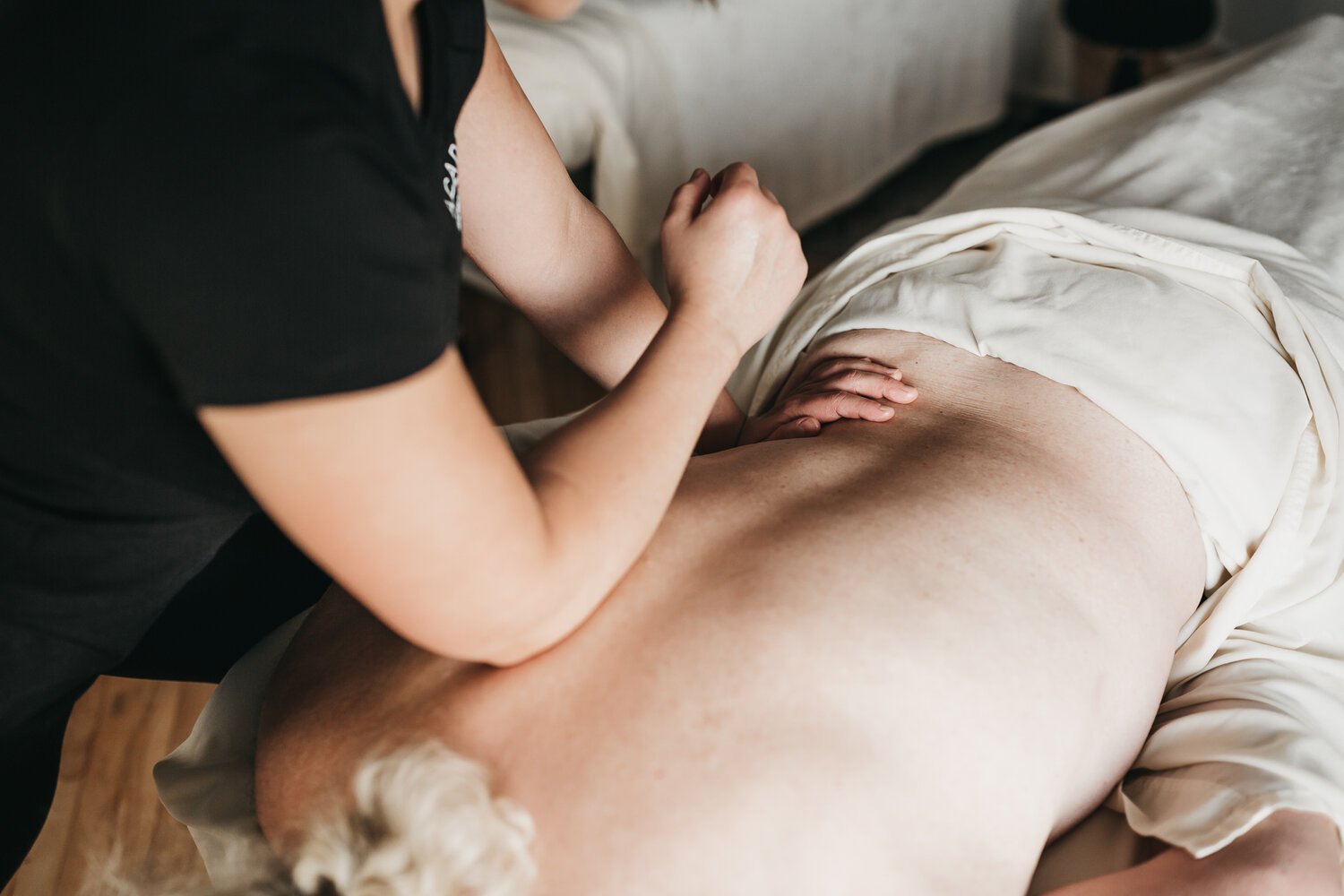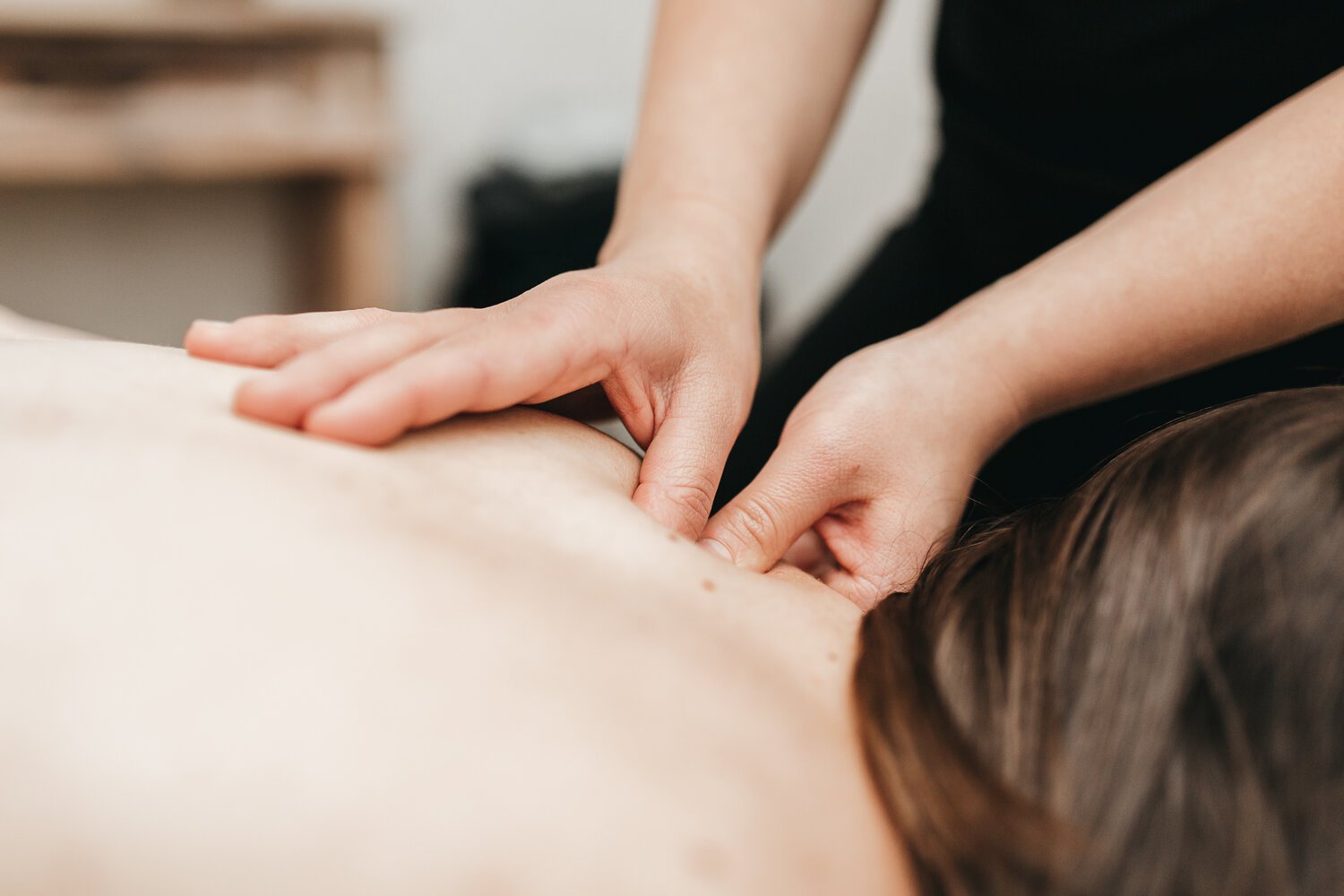Deep Tissue Massage
To begin your deep tissue massage treatment, your massage therapist will first warm up your muscles using warm oils and direct pressure. This helps to relax your top layer of muscle, so your therapist will be able to reach deeper layers of the muscle tissue. Once your muscles are warmed up, your massage therapist will apply deeper pressure using their hands, elbow, knuckles and thumbs. They will apply sustained pressure using slow, deep strokes to target the inner layers of your muscles and connective tissues. This can help to break up any scar tissue that may have formed from an injury or repetitive motion.
During a deep tissue massage, you may feel some discomfort. The discomfort should feel like a "good hurt", the kind that feels good at the same time — like you’re giving your body something it’s been asking for. But it shouldn’t feel painful. Pain may cause your body to tense up, making it harder for your massage therapist to reach the deeper layers of muscle. So, if you feel any pain, definitely let your massage therapist know. That way they can adjust their technique or further prep your muscles before continuing. It is important to feel open and relaxed with your massage therapist, so that you feel comfortable providing feedback on the pressure and area being worked on. Massage pressure tolerance is incredibly varied from person to person. This is why we often recommend a recurring appointment with a massage therapist you enjoy.
Note: Sometimes your therapist may combine Swedish (aka relaxation massage) massage techniques and deep tissue massage techniques, depending on the issue you’ve described. At Academy Massage Therapy, we like to cater our treatments to the unique needs of our clients. This is why we’ll also start your appointment by asking you what has brought you in, so we can adjust your treatment accordingly.
-
Your choice of 30, 45, 60, 75, and 120-minute durations.
Most Popular
75 Minutes or 90 Minutes -
Deep and targeted pressure.
Firm and slow strokes.
-
Deep tissue massage is suitable for those who may be experiencing chronic pain or discomfort, muscle aches, strains, or sports-related injuries.
-
Deep tissue massage helps to treat chronic or recurring muscle pain. Common reasons you may seek out deep tissue therapy is to get relief from lower back pain, release tension in a stiff neck, sore shoulders, and upper back, or to loosen tight muscles in your arms and legs.
This style of massage therapy has been proven to provide relief from sports or work injuries, chronic headaches, TMD/TMJ, high blood pressure, plantar fasciitis, tennis elbow, sciatica pain, and even fibromyalgia.
On top of relieving pain, deep tissue massage can lower your blood pressure, reduce stress and anxiety, help with depression, and can even help to break up scarred tissue. Many of these health benefits can be felt immediately after your massage treatment, but some may require regular treatments to really experience the benefits. At our River Heights location here in Winnipeg, we can always set up a recurring treatment for you with your preferred therapist.




